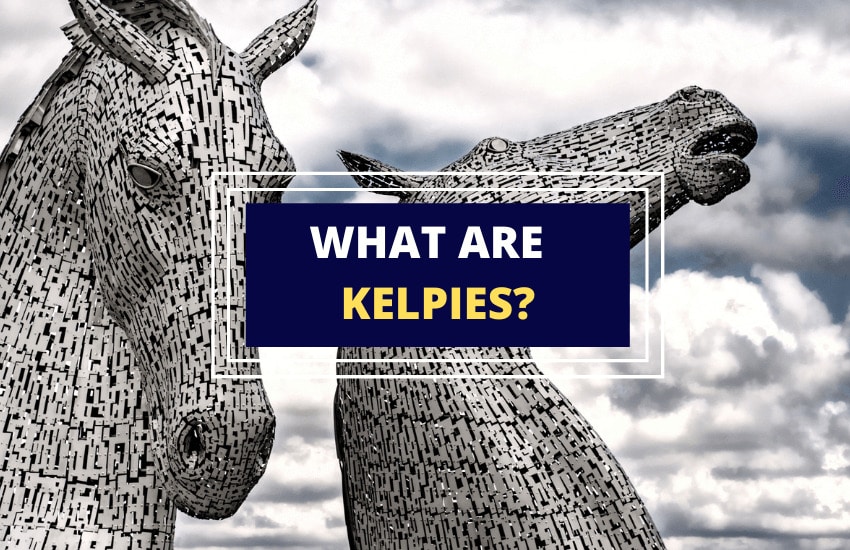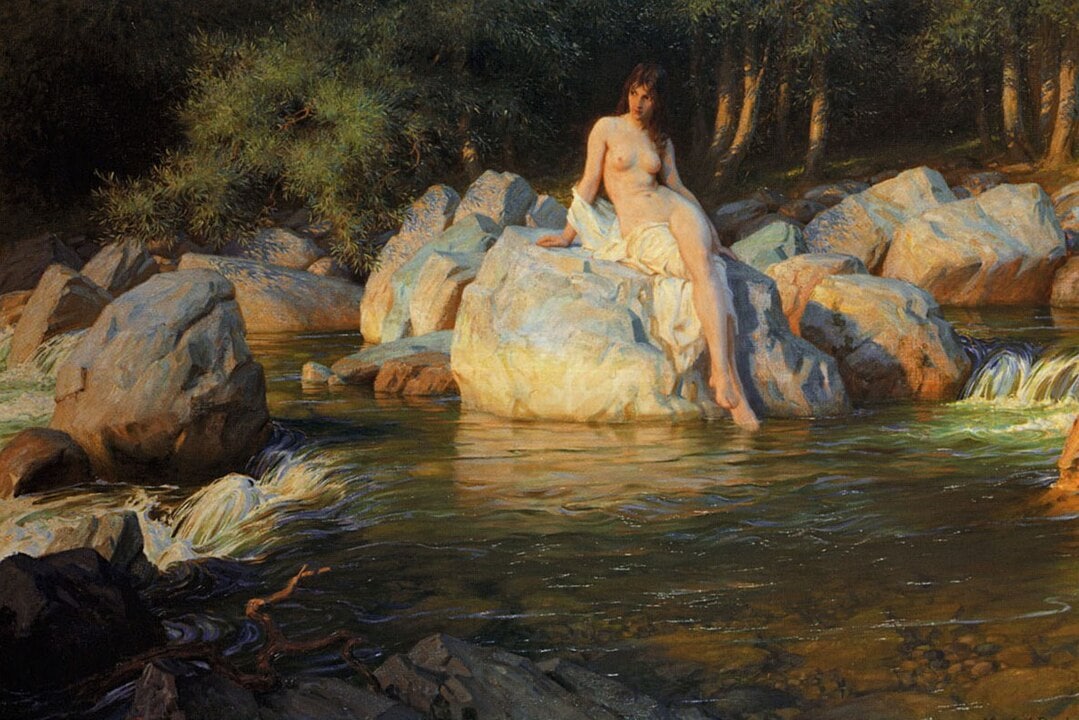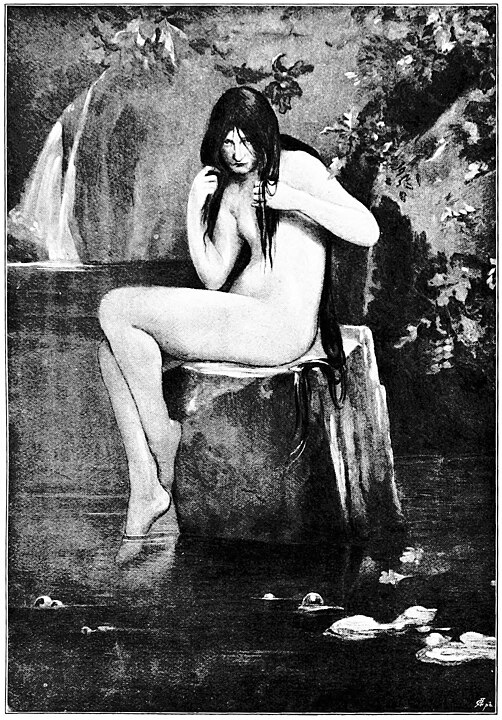
Table of Contents
The kelpie is a mythological creature and one of the most famous aquatic spirits in Scottish folklore. It was believed that kelpies often transformed into horses and haunted streams and rivers. Let’s take a look at the story behind these fascinating creatures.
What are Kelpies?
In Scottish folklore, kelpies were beautiful creatures that took on the forms of both horses and humans. Although they looked beautiful and innocent, they were dangerous creatures that would lure people to their deaths by coming to shore. They would take on the form of a horse, with a saddle and bridle to attract attention.

Those who were attracted to the animal’s beauty, would attempt to sit on its saddle and ride it. However, once they sat on the saddle, they would become fixed there, and unable to dismount. The kelpie would then gallop straight into the water, taking their victim to its depths where it would finally devour them.
Kelpies would also take on the form of beautiful young women and sit on rocks by the river, waiting for young men to come by. Much like the Sirens of Ancient Greece, they would then seduce their unsuspecting victims and drag them into the water to be eaten.
Origins of the Kelpie Myth
The kelpie myth has its origins in ancient Celtic and Scottish mythology. The meaning of the word ‘kelpie’ remains uncertain, but one theory suggest that it was derived from the Gaelic word ‘calpa’ or ‘cailpeach’ which means ‘colt’ or ‘heifer’.

According to certain sources, the kelpies may have their roots in ancient Scandinavia, where horse sacrifices were performed.
The Scandinavians told stories of dangerous water spirits that ate little children. The purpose of these stories was to scare children into staying away from dangerous waters.
Much like the Boogeyman, the stories of the kelpies were also told to scare children into good behavior. They were told that the kelpies would come after children who behaved badly. especially on Sundays. Kelpies were also blamed for any deaths caused in water. If someone drowned, people would say that they had been captured and killed by the kelpies.
Since the kelpie was said to have taken on the form of a man, traditionally, the story warned young women to be wary of young, attractive strangers.
Depictions and Representations of Kelpies

The kelpie is often described as a large, strong, and powerful horse with black hide (although in some stories it was said to be white). To unsuspecting passersby, it looked like a lost pony, but it could be easily identified by its beautiful mane. What was special about the kelpie’s mane was that it always dripped water.
According to some sources, the kelpie was entirely green with a flowing black mane and a large tail that curled over its back like a magnificent wheel. It’s said that even when it took on human form, its hair always continued to drip water.
The kelpie has been depicted in many works of art throughout history in its various forms. Some artists sketched the creature as a young maiden sitting on a rock, whereas others depict it as a horse or a handsome young man.
In Falkirk, Scotland, Andy Scott sculpted two large, steel horse heads about 30 meters high, which became known as ‘The Kelpies’. It was built to bring people together not only from Scotland and the rest of Europe, but from all corners of the world.
Stories Featuring Kelpies
1. The Ten Children and the Kelpie
There are numerous stories about the kelpie which vary depending on the region. One of the most common and well-known stories about these mythological creatures is the Scottish tale of ten children who one day came across a beautiful horse by the river. The children were fascinated by the beauty of the creature and wanted to ride it. However, nine of them climbed onto the horse’s back, while the tenth kept a distance.
As soon as the nine children were on the kelpie’s back, they got stuck to it and couldn’t get off. The kelpie chased the tenth child, trying its hardest to eat him, but the child was quick and escaped.
In an alternate version of the story, the tenth child stroked the creature’s nose with his finger which got stuck to it. Realizing the danger he was in, the child cut off his finger and cauterized it with a piece of burning wood from a fire he found burning nearby.
In a more gruesome version of the tale, the child’s entire hand was stuck to the kelpie, so he took out his pocketknife and cut it off at the wrist. By doing this, he managed to save himself, but his nine friends were dragged underwater by the kelpie, never to be seen again.
2. The Kelpie and the Fairy Bull
Most of the stories tell of kelpies in the form of beautiful horses, but there are few about the creature in human form. One such story is the tale of the kelpie and the fairy bull, which was told to keep children away from the Lochside.
Here’s how the story goes:
Once, there was a family that lived near a loch and they had many cattle. Amongst their cattle was a pregnant one who gave birth to a large, black calf. The calf looked dangerous with red nostrils and it also had a bad temper. This calf was known as a ‘fairy bull’.
One day, the farmer’s daughter, who knew all about kelpies, was taking a walk along the Lochside, keeping an eye out for saddled water horses. Soon, she came across a young, handsome young man with long hair and a charming smile.
The young man asked the girl for a comb, saying that he had lost his, and couldn’t untangle his hair. The girl gave him hers. He began to comb his hair but then couldn’t reach the back so she decided to help him.
As she combed his hair, the farmer’s daughter noticed that the hair was damp and that there were seaweed and leaves in this hair. She found this quite strange but then she began to realize that this wasn’t any ordinary young man. He had to be a beast from the loch.
The girl began to sing as she combed and soon, the man was fast asleep. Quickly but carefully, she stood up and began to run home in terror. She heard the sound of hooves behind her and knew that it was the man who had woken up and turned into a horse to catch her.
Suddenly, the farmer’s fairy bull stormed into the path of the horse and two began to attack each other. In the meantime, the girl continued to run until she was finally home, safe and sound. The kelpie and the bull fought and chased each other to the Lochside where they slipped and fell into the water. They were never seen again.
3. The Kelpie and the Laird of Morphie
Another famous story tells of a kelpie that was captured by a Scottish Laird known as Graham of Morphie. Morphie used a halter with a cross stamped on it to harness the creature and forced it to carry large, heavy stones he needed to build his palace.
Once the palace was completed, Morphie released the kelpie who cursed him for ill-treating it. The Laird family later became extinct and many people that it was because of the kelpie’s curse.
What Do the Kelpies Symbolize?
The origin of Kelpies is probably related to the foaming white waters of fast rivers that can also be dangerous to those who try to swim in them. They represent the dangers of the deep and the unknown.
Kelpies also symbolize the repercussions of temptation. Those who are attracted to these creatures pay for this temptation with their lives. It’s a reminder to stay on track, without veering off into the unknown.
For women and children, kelpies represented the need for good behavior, and the importance of following norms.
In Brief
The kelpies were unique and dangerous aquatic creatures that were considered to be vicious and evil. It was believed that they hunted all humans for food and had no mercy for their victims. The tales of the kelpies are still told in Scotland and other European countries, especially among those who live by loches.








